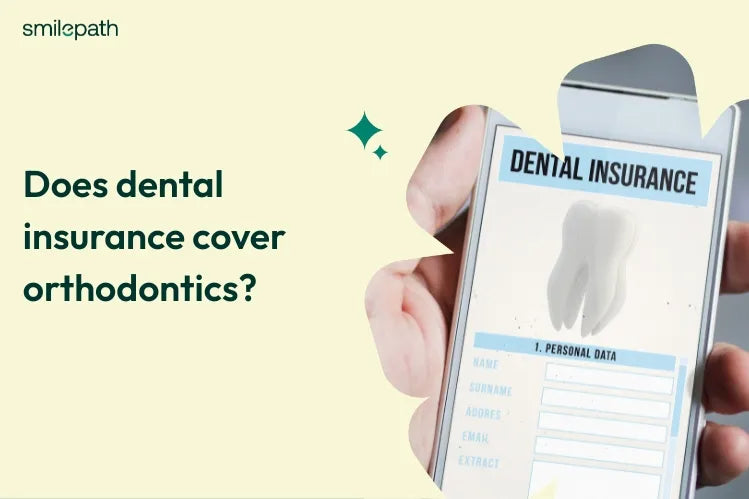
Dental insurance is a kind of medical insurance that pays for both restorative and preventive dental treatment. Typically, dental insurance plans operate on a fee-for-service basis, which means that the insurance company pays a set percentage of the cost of covered services, and the patient is responsible for paying the remaining balance.
Some dental insurance plans operate on a capitation basis, which means that the dentist is paid a fixed amount per patient per month, regardless of the amount of treatment the patient receives.
Does dental insurance cover orthodontic treatment?
Orthodontic treatment aims to fix the alignment of teeth and jaws. The most common type of orthodontic treatment is braces, which are used to straighten teeth and correct bite problems. Orthodontic treatment can be expensive, with costs ranging from a few thousand to tens of thousands of dollars.
Whether dental insurance covers orthodontic treatment depends on the specific plan. Most dental insurance plans do not cover orthodontic treatment for adults. However, some plans may cover a portion of the cost of orthodontic treatment for children under the age of 18. The amount of coverage and the specific services covered vary depending on the plan.
Types of dental insurance plans
There are several types of dental insurance plans, including indemnity plans, preferred provider organizations (PPOs), and health maintenance organizations (HMOs).
Indemnity plans are the most common kind of dental insurance coverage. These plans allow patients to see any dentist they choose, and the insurance company pays a set percentage of the cost of covered services.
PPOs are a type of dental insurance plan that offers a network of dentists who have agreed to provide services at a discounted rate. Patients can choose to see any dentist in the network or go out of the network, but the out-of-pocket costs are typically higher.
HMOs are a type of dental insurance plan that operates on a capitation basis. Patients are required to choose a primary care dentist from a network of providers. The primary care dentist is responsible for coordinating the patient's care and referring the patient to specialists when necessary.
Orthodontic coverage in dental insurance plans
As mentioned earlier, dental insurance plans vary in their coverage of orthodontic treatment. Here's a closer look at the types of orthodontic coverage in dental insurance plans:
No coverage
Some dental insurance plans do not cover orthodontic treatment at all.
Limited coverage
Some dental insurance plans offer limited coverage for orthodontic treatment. This may include coverage for initial consultations, X-rays, and a portion of the braces or clear aligners’ cost.
Comprehensive coverage
Some dental insurance plans offer comprehensive coverage for orthodontic treatment. This may include coverage for all aspects of orthodontic treatment, including braces or aligners, retainers, and other appliances.
Tips for finding dental insurance with orthodontic coverage
If you are looking for dental insurance that covers orthodontic treatment, here are some tips:
Check with your employer
If you have dental insurance through your employer, check with the benefits department to see if orthodontic coverage is available.
Shop around
If you are purchasing dental insurance on your own, shop around for plans that offer orthodontic coverage. Look for plans that offer comprehensive coverage with reasonable annual or lifetime maximums.
Read the fine print
Before selecting a dental insurance plan, make sure to read the details of the coverage. Be sure to check the annual or lifetime maximums, the percentage of coverage, and any restrictions or limitations.
Consider a discount plan
If you cannot find a dental insurance plan that offers orthodontic coverage, consider a dental discount plan. These plans offer discounts on dental services, including orthodontic treatment, for a monthly or annual fee.
FAQs
Most dental insurance plans offer coverage for routine dental care such as cleanings, fillings, and X-rays. However, coverage for orthodontic treatment can vary depending on the plan. Some dental insurance plans may offer partial or full coverage for orthodontic treatment, while others may not offer any coverage at all.
The type of dental insurance plan you have, the extent of your orthodontic needs, and the age of the patient can all impact whether or not orthodontic treatment is covered. The severity of the orthodontic issue and the type of treatment needed (such as braces or clear aligners) can affect coverage.
The best way to determine whether your dental insurance plan covers orthodontic treatment is to contact your insurance provider directly. You can typically find the contact information for your insurance provider on your insurance card or by logging into your online account. Be sure to ask about any deductibles, co-pays, or annual maximums that may apply to orthodontic treatment, as these can impact your out-of-pocket costs.
Some people may experience a burning or tingling sensation in their mouth after using mouthwash. This is usually temporary and should subside quickly. However, if you experience any persistent side effects or discomfort, stop using the mouthwash and consult your dentist or healthcare provider.


 Australia
Australia New Zealand
New Zealand Malaysia
Malaysia English
English Portuguese
Portuguese English
English English
English English
English English
English English
English Canada
Canada